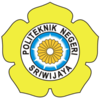TELECOMMUNICATIONS ENGINEERING
TELECOMMUNICATIONS STUDY PROGRAM
Introduction
Telecommunications Engineering Study Program (D IV) was established as the development of telecommunications engineering D III program in facing fast growth of telecommunications technology. This study program was established in 2013 based on the Decree of the Minister of Education and Culture of the Republic of Indonesia number: 202/E/O/2013 dated May 21, 2013. Currently, it has accepted one class for morning and also one class for afternoon. The management system of this study program is based on Quality Management System (QMS) ISO 9001: 2008.
Vision
Toward a leading vocational education study program in Telecommunications Engineering that develops qualified competence in telecommunications network so as to prepare professionals that can compete in global industry.
Mission
- Developingapplied science educationin the field ofTelecommunications particularly incommunicationtechnology andnetworking;
- Creatingpositive academicatmosphereandqualified and systematic learning processso asto optimizepotentialandcreativity ofthe entire college member;
- Implementing learning processby doing innovation in Telecommunications that fit to industrial andglobalmarket needs;
- Producinggraduates that arecapableof designing, building and maintainingtelecommunication devicesin accordancewith theneeds oftelecommunicationnetworks industryandservicesthroughan integratedlearning process.
Purposes
- To produce graduates who are competent in telecommunication networks and communication technologies so as to meet the needs of industry and society;
- To produce innovative telecommunication and communication works that meet the need of national industry and can solve telecommunication network problems both analytically and by using measuring instruments;
- To improve competence and competitiveness of Telecommunications Study Program in serving industry, community and nation.
Targets
- Able to develop science and technology in the field of telecommunications by mastering and understanding the approaches, methods, scientific principles and application:
– Graduates work in related- industry ≥50% in 2018
– At least 75% of graduates’ GPA > 3.00 - Able to solve problems in telecommunication by implementing and using appropriate method instrumentation: (breadth)
- Starting from 2018, At least50% of alumnireach 0-6month first job waiting period
- Able to developprofessionalperformanceintelecommunicationnetworksindicated by thesharpness ofproblem analysis, the sufficiency of review, the cohesiveness of problem solving and professional ethic: (professionalism)
- In even semester in 2017 at least80% of alumnihave certificate of competence.
- Programmed learning environment which can promote self-reliance in achieving learning goals and in social life: (learning environment)
– Has 90% adequate main and supporting laboratory at the end of 2014;
– At least 40% of the students are involved in research and community service;
– At 40% of the students participate in local or national student creativity program.
- Entrepreneurship capability
Strategies to achieve targets
- Provide structured and dynamic learning materials that correspond to the syllabus.The curriculum consists of courses in accordance with the desired competencies;
2 . Improve the quality of laboratory;
3 . Improve human resource capacity to provide training on especially on new imported equipment are mainly imported .
4 . Support from the lab to develop skills in both hardware and software;
5 . 56 % practice and 44 % theory;
6 . Provide additional skills certification such as the latest software to each candidate graduates. Training will be given to students in semester VI or VII. The schedule of the training will be specified later;
7 . Involving students in making scientific articles and involve students in faculty research every year through Student Creativity Program ( PKM );
8 . Following seminars/conferences/scientific forum on telecommunication network technology all over Indonesia and abroad as it has been done by some permanent faculty of D.IV telecommunication Engineering program;
9 . Improving academic atmosphere for students to increase their motivation in learning by;
– Motivator activities-inviting experts to improve motivation and achievement of students in mid- 2014;
– Intensifying the role of an academic supervisor.
10 . Continuing collaboration with Axiata PT.XL in the form of training of students and public lectures/seminars .
11 . Increase collaboration with industry and graduates who work in the industry and government agencies to obtain information about the needs of the competency -based curriculum. This activity is carried out 6 months after the first graduates of the program D.IV or in the 1st half of 2017;
12 . Involve faculty in tracer studies to related industry and government agencies for partnership program.
- Deployment questionnaires for the purposes of relevant changes in the educational curriculum in order to develop human resources in industry . This activity is carried out 6 months after the first graduates of the program D.IV or in the 1st half of 2017.
Graduates’ Profile
Telecommunications Study Program organizes education for 4 years (8 semesters) with a composition of 42% theory and 58% practice. The competences to be developed among others are designing, building and maintaining Telecommunication Network.
Learning Outcomes
- 1. Master basics of telecommunications network;
- 2. Able to design, build and maintain telecommunications network;
- 3. Able to solve problem by evaluating instrumentation based on appropriate methods;
- 4. Able to communicate, make decisions and provide advice in solving telecommunication network problem.
Graduates’ Competences
Core Competences
Radio and Television Communication
- Able to work at wireless telecommunication Systems such as Radio and Television in which the line communication is fixed;
- Able to install Radio and television Network mainly inside the studio.
Cellular communications: GSM and CDMA
1. Able to work in mobile telecommunication system agencies;
2. Able to operate GSM and CDMA control device
Networkings: LAN, WAN and the Internet
1. Able to work in internet local system using cable network;
2. Able to install LAN, WAN and internet Network
Able to adapt to the development of Telecommunications Technology
Since the beginning, students not only learn materials that are in accordance with the curriculum and syllabus, they also do independent task so they can develop their potential.
Supporting Competences
Design and maintain telecommunication devices
Other Competence
Entrepreneurship
Facilities
8 loboratories with the newest facilities:
- 1. High Frequency Laboratory
2. Basic Telecommunications Laboratory
3. Analog and Instrument Tools Laboratory
4. Data Communications Laboratory
5. Microprocessor Laboratory
6. Transmission Laboratory
7. Digital Lababoratory
8. Signal processing Lababoratory
Two new laborotories:
- 1. Mechanics workshop
2. Electronics workshop
